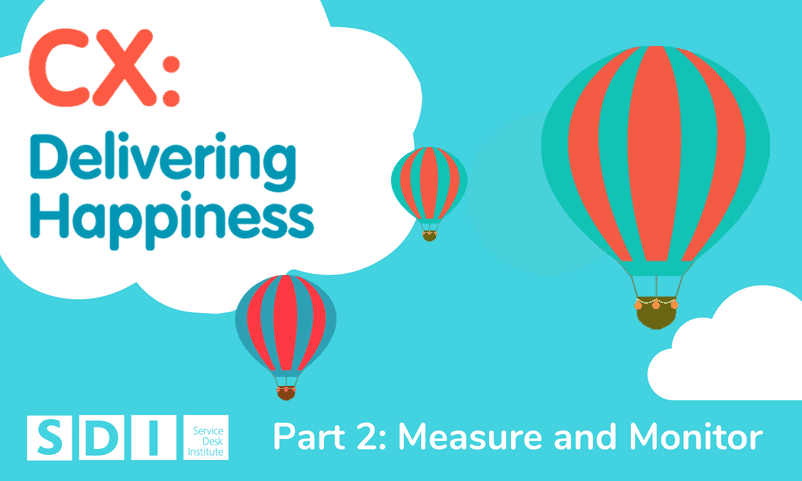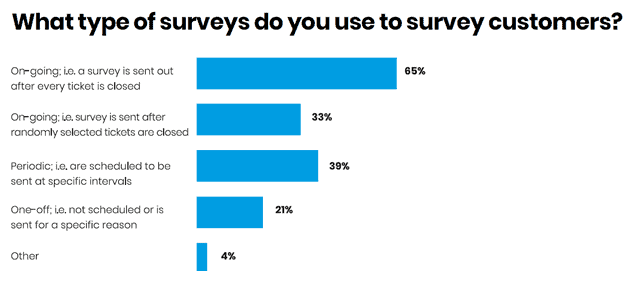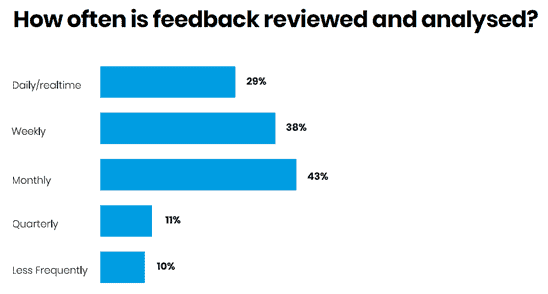
CX: Delivering Happiness
The ‘CX: Delivering Happiness’ Series is all about the shift in the ITSM industry which is beginning to steer the focus away from traditional metrics and towards recognising the significance of the customer experience. It will focus on everything from the ‘why’ and ‘how’ to measure CX, what affect it will have on service desks in the future, and even ways to take part in upcoming industry opportunities, ensuring you don’t get left behind. Part 2 looks at the best ways to measure and monitor customer satisfaction and the customer experience.
Part 2: Measure and Monitor
The previous blog in this CX Series discussed the shift we are seeing within the industry towards placing more importance on the customer experience over more traditional metrics. Part 2 will look at how to measure Customer Satisfaction (CSAT) effectively, tips on monitoring CX (Customer Experience), and how tools can use real-time analytics to give an insight into live CX levels.
When measuring CSAT, a service desk should assess their capabilities in terms of time and resources, then determine how frequently it can send out surveys as well as review and analyse responses. However, to effectively measure CX, a service desk should send surveys frequently, on an on-going basis, and review and analyse responses as often as possible, potentially in real-time.
Measuring CSAT
In the Customer Experience in ITSM Report, we asked respondents what type of surveys they use to survey their customers.
 On-going surveys are the best type to allow you to monitor and trend CSAT as a continual process, but there are potential problems that may arise; customers may become frustrated with constantly being asked to fill out surveys, which can in turn have an impact on response rates. This can be avoided by making surveys as short, simple, and convenient for the customer as possible. It is also important to be mindful of the fact that other business factions may be sending customers surveys, so making surveys short and sweet means customers may be more likely to provide feedback.
On-going surveys are the best type to allow you to monitor and trend CSAT as a continual process, but there are potential problems that may arise; customers may become frustrated with constantly being asked to fill out surveys, which can in turn have an impact on response rates. This can be avoided by making surveys as short, simple, and convenient for the customer as possible. It is also important to be mindful of the fact that other business factions may be sending customers surveys, so making surveys short and sweet means customers may be more likely to provide feedback.
One example would be sending an email or link only after a ticket has been closed, asking them to rate the service based on a star or happy/sad face rating; this is a fast, simple, and convenient method for the customer. It also provides the service desk with enough data to determine if there are any issues with the service and investigate further if a customer has responded with a particularly low rating.
To gain a broader perspective of customers’ general satisfaction of the service desk, periodic surveys can be used and monitored overtime. One-off surveys can be useful when determining if a specific event or change has had an impact on CSAT scores, and therefore bring attention to any issues if the impact has been negative.
 CSAT survey data is only valuable if it is reviewed and analysed; the service desk should determine how often they process their feedback. Failing to regularly review survey data could mean that the chances to gain constructive and useful feedback are being missed, and customers may feel that the service desk does not value their input, which may inhibit them from completing surveys in the future.
CSAT survey data is only valuable if it is reviewed and analysed; the service desk should determine how often they process their feedback. Failing to regularly review survey data could mean that the chances to gain constructive and useful feedback are being missed, and customers may feel that the service desk does not value their input, which may inhibit them from completing surveys in the future.
Reviewing data in real-time can be taxing for the service desk and may require a lot of resources, but it is the best method to gain insight into the customer experience and undoubtedly has its advantages.
Monitoring CX
While CSAT scores, when monitored and analysed frequently and effectively, can provide insight into customers’ satisfaction of a service, this metric by itself may not be able to give you the full picture. Using multiple methods to gain customer feedback, such as Net Promoter Scores (NPS) and ‘in the moment’ questions, as well as CSAT surveys provide more scope and data to capture a better awareness of a customers’ experience.
Of course, this will result in a large volume for the service desk to process; with 30% of service desks currently not measuring CSAT specifying that this is due to insufficient resources. Recent SDI research shows that over 70% of service desks spend most of their time firefighting and therefore analysing large amounts of data may seem an impossible task. However, there are several tools and pieces of software which can automate the collection and analysis of CSAT data in real-time, therefore taking on the time-consuming, repetitive tasks and allowing the service desk time to monitor CX live. This can be particularly advantageous during service outages or after a change or release, as it can show how valuable the service desk is, if keeping CX at relatively ‘good’ levels by handling contacts to the service desk well.
Planning on improving your CX scores?
Take a look at SDI’s thought leading virtual XLA event on 2 February 2022 and CX WORKSHOP to discover how to drive customer-centric service improvement and define an end-to-end approach to managing your customers’ experiences.


























